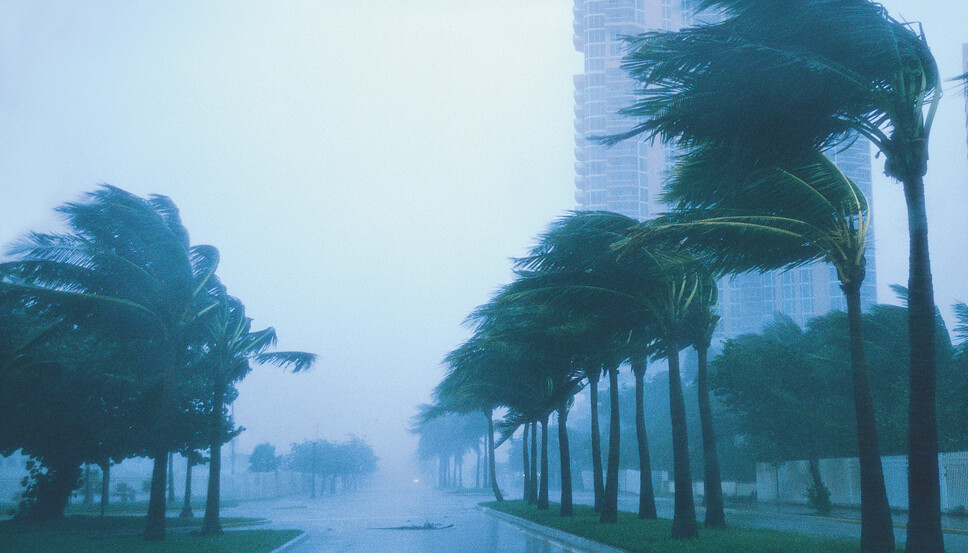Source: WuzupNigeria
The spread of seeds, particles and pathogens over considerable distances is of great concern. Especially given the current trend of converting crops from tradition crops to GMO (genetically modified crops). Proprietary seeds are held tightly among farmers who pay to plant special seeds. The ability to protect the spreading of seeds under storm conditions is nearly impossible. That is during normal conditions -- i.e. normal weather: sunny, average temperature, humidity level for a given geographical area -- seeds are controlled by the human distribution of seeds. What happens to this phenomena (spreading of spores, seeds, particles, dust, pathogens, etc.) during a rain storm?
Rain falls to the ground and forms puddles over time. Water which gathers on the ground contains dirt, particles, pathogens, seeds, etc. When a rain drops out of the sky and hits the ground during a wind storm, what happens to those pathogens (and other particles) in the water? What about the surface of a leaf? Do these pathogens (and particles) travel over distances during a rain/wind storm? What is the mechanism by which pathogens (and particles) travel over large distances?
How do particles (and pathogens) get into the air?
Past research has shown that rust (build up on metal or other surfaces) can spread in a wind storm a considerable distance -- on the order of kilometers (1 mile = 1.60934 kilometers). Research published last November in the Journal 'Proceedings of the National Academy of Sciences' revealed the mechanisms by which pathogens (and other particles) travel over large distances. The study revealed the exact mechanisms broken down into parameters such as overcoming cohesive force between spores clustered together on a surface, the ejection mechanism (how to get off the ground into the air), and the traveling of the pathogen over large distances. Next, add into the mix a rain storm with wind.
To break this down further. Imagine a pathogen (or seed, particle, etc.) sitting on the ground. The wind is rushing by above the surface on which the pathogen sits. How does the pathogen acquire enough energy (kinetic energy) to be ejected into the air rushing by above? That is where the researchers use high-speed cameras (as shown in the videos below) to tease out the exact mechanisms. High-speed cameras show that a falling rain drop contains enough energy to eject a pathogen (and other particles) into the laminar air flow which can potentially travel over large distances.
Upon impact with the ground, the energy of the rain drop is distributed unevenly into a series of droplets which splash up and outward. The kinetic energy of the outward water distributed creates enough of a vortex (as shown in the video below) to eject a pathogen from the ground up into the rushing air above the surface. From there, the pathogen has sufficient energy to travel large distances given that the wind maintain a constant energy to push the pathogen along.
Also contained in the research paper are the simulations which were used along with the calculations (and equations) on which the phenomena was modeled. The data was in agreement with the evidence obtained in the high-speed camera videos. Here are two videos to show how the spores (plant pathogens) are elevated into the air once the drop hits the surface:
The second video shows the formation of a vortex by the rain drop which is one of a few critical parameters for pathogens ejecting off of a surface and joining a laminar flow to travel large distances:
The videos show above that there is sufficient energy in a rainwater drop to eject a pathogen (or other particles) up into the air. Ejecting the pathogen is sufficient enough to catch a larger airflow of laminar air which could potentially carry the pathogen over large distances -- i.e. kilometers, miles, etc. The research represents a good model by which pathogens can travel over large distances. Previous research did not provide exact detail of vortex formation which would be sufficient to lift a pathogen into larger vortexes.
The research represents a quantification of dynamics of pathogen (disease) spreading among the plant community. Rain drops are one pathway by which pathogens could acquire enough energy to be ejected into the air to travel large distances. More studies will help optimize the conditions under which pathogens travel and possibly shed light into new avenues of mechanisms of ejection. The ejection mechanisms uncovered in the research above add to the existing contribution from insects residing on leaf surfaces, leaf vibration, along with other kinetic energy contributions. Overall, the research represents yet another parameter revealed in disease propagation in the agricultural community.
Related Blog Posts:
How Do Scientists Track Bees Inside BeeHives? Use QR Codes?
Want To Improve Science Communication: Add Artists!
Should you consider science while before voting next Tuesday?
The Executive Director Of The American Meteorological Society Educates President Trump On Climate Change
White Blood Cells in action destroying Cancer Cells!
Why Chemistry Matters from the mouths of Nobel Laureates!
Bacteria communicating in communities -- quorum sensing
What Is Going On Inside That Cell?
How Dangerous Are Cigarettes?
What Is Dimensional Analysis?
Chemistry Videos Unveil Problems With Battery Technology
A Virtual Tour Of A Plant Cell? Really?
A Virtual Tour Of A Human Cell?
Richard Branson's Son Produces Short Films To Illustrate The Devastation By Hurricane Irma

No comments:
Post a Comment